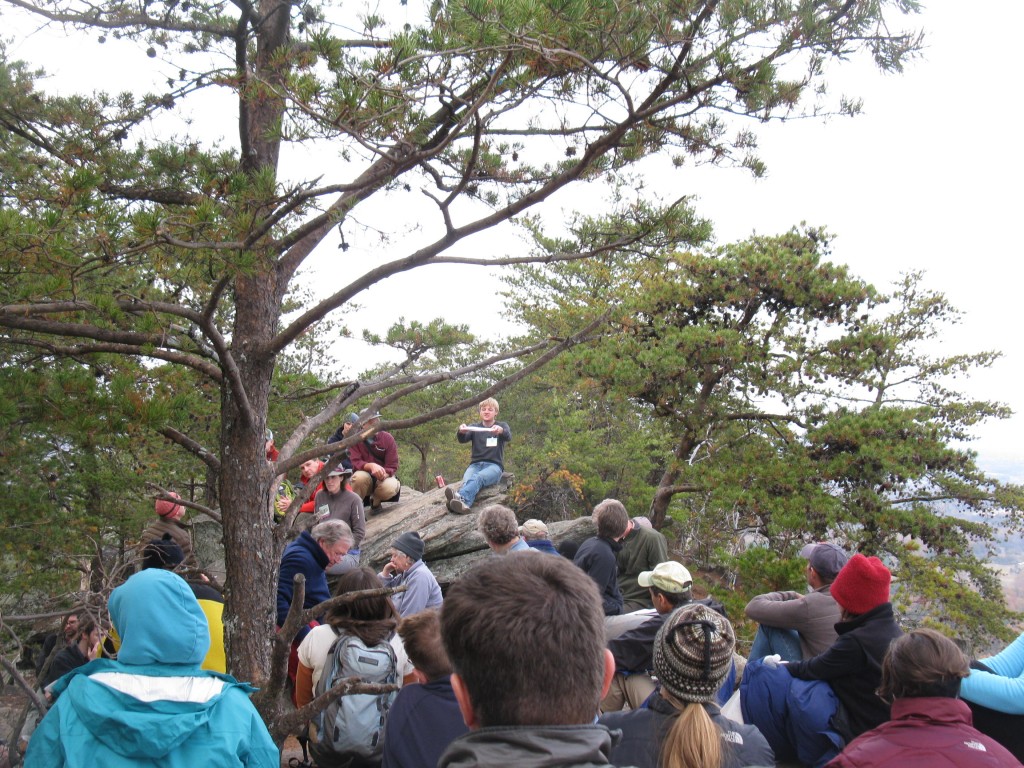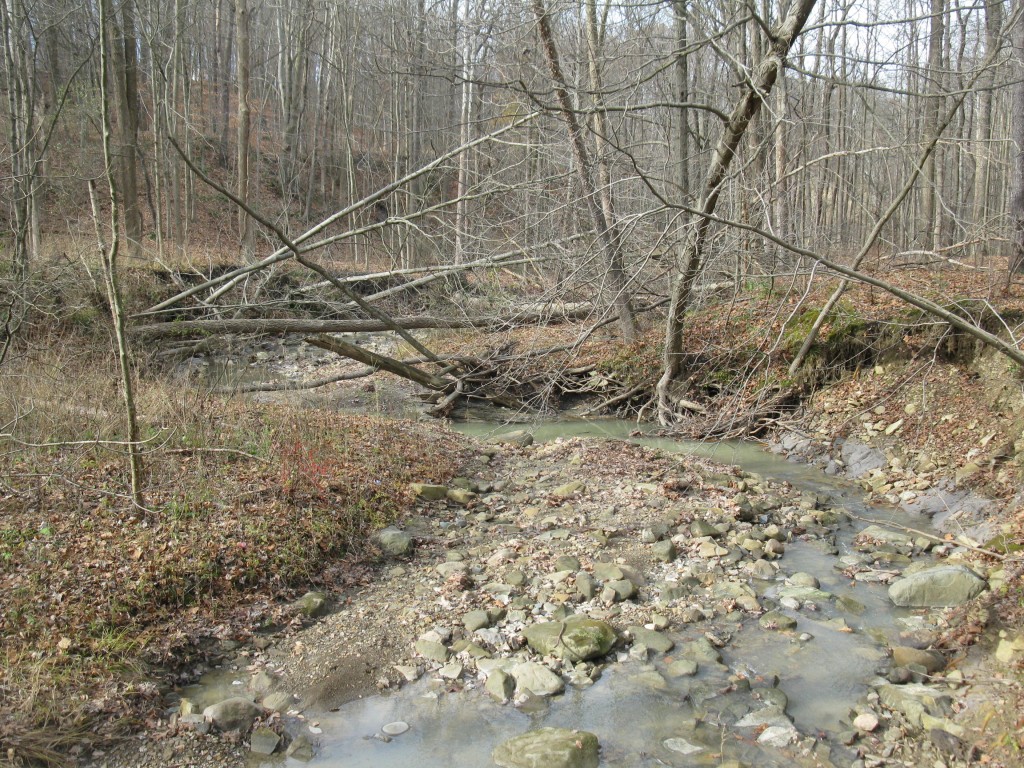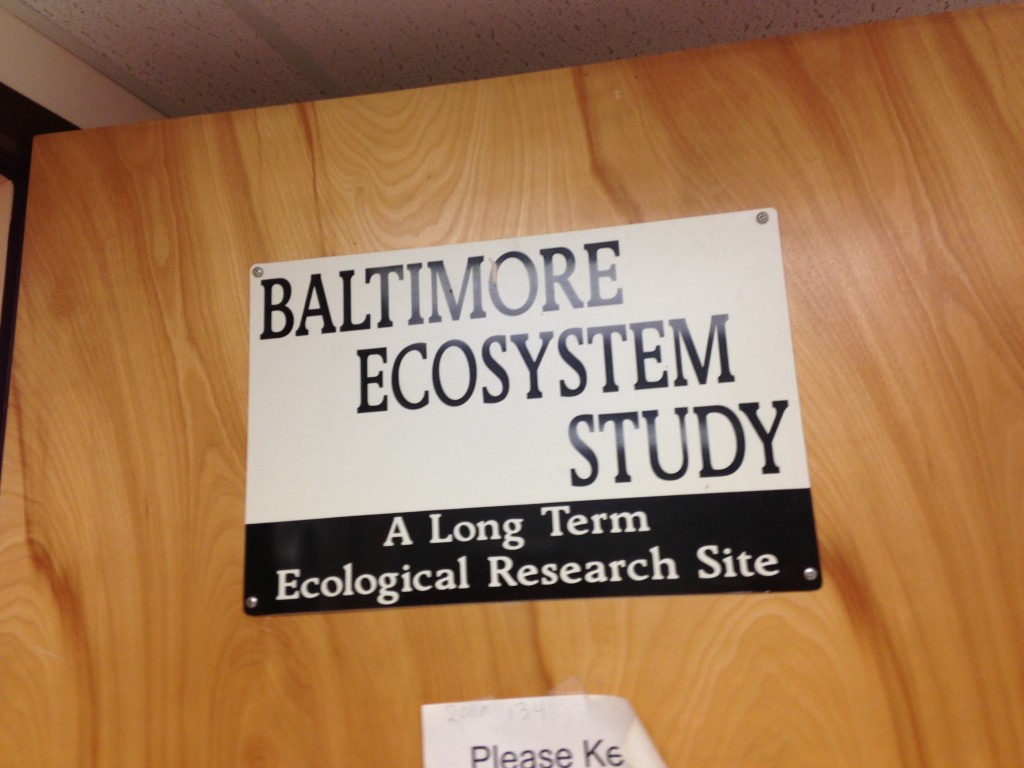Anne’s November Navigations
Cross-posted at Highly Allochthonous
I’m not joining the exodus of geoscientists to AGU this week; I’m still recovering from November.
I’m not sure whether I spent more time in Ohio or outside of it last month. The month started with the rain and runoff from our brush with Superstorm Sandy, but by November 2nd I had a car packed full of conference and research gear and was heading south to North Carolina. The drive south was a great chance to watch all sorts of geology go by at interstate speeds. I started out in the glaciated Appalachian Plateau, drove south of the glacial limit, crossed the Ohio River, and was soon in the heart of the Appalachians and West Virginia‘s coal mining country. On Interstate 77, the border between West Virginia and Virginia seems to mark the dramatic transition the Valley and Ridge Province, then it is up on to the Blue Ridge and finally down the Blue Ridge Escarpment and into the Piedmont and North Carolina, finally arriving in Charlotte after eight hours of driving. Climatically, I left the cold and damp, drove through the snow left behind by Sandy, and ended up in the warm, sunny, and very dry south.
The Geological Society of America meeting was a busy time. I convened two sessions, helped lead a field trip and had more meetings for committees and with colleagues than I care to remember. But it was a great time to hear about exactly the sorts of science that I find most interesting and to get out in the field with 50 friends and colleagues to talk about new ideas in geomorphology.
- Geomorphology of the Anthropocene: The Surficial Legacy of Past and Present Human Activities. We had an amazing slate of speakers that packed the room, fantastic poster presenters that drew a crowd, and we were able to announce that we will be editing a special issue of the new journal Anthropocene with papers from the session. Then the journal’s publisher threw us a special reception.
- Hydrology of Urban Groundwater, Streams, and Watersheds. This session featured another roster of incredible speakers and a kick-ass set of posters featuring many of my students and colleagues from UNC Charlotte.
- Kirk Bryan Field Trip: Piedmont Potpourris: New Perspectives on An Old Landscape (and Some of its Younger Parts. The annual syn-meeting field trip of the Quaternary Geology and Geomorphology division always features good scenery and intense but friendly discussions. This year we looked at an old mill dam site in an urban stream and channel heads and terrace soils near the Catawba River, and then we climbed a monadnock to talk about Blue Ridge escarpment retreat and the long term evolution of landscapes. Plus, we had a delicious lunch of NC barbecue on our able and charismatic field trip leader’s front lawn.

Field trip leader Missy Eppes atop a typically red soil profile, on a terrace above the Catawba River.

An enthusiastic and well fed group of geomorphologists and Quaternary geologists on a delightful November day.
After the meeting was over, I stuck around Charlotte for a few days, with plans to do a tracer injection in one of my local field sites. As I’ve already shown you, that didn’t work out so well. So I headed back north.
Back in Ohio, I did some exploring of Cuyahoga Valley National Park, which was timely given that I am just about to submit a proposal to do work in the headwater streams in and around the park. I also spent a wonderful day with someone from the Ohio EPA, looking at dam removal and stream restoration sites in the region.
My fun explorations of Ohio streams were tempered with sadness though. Just before Thanksgiving, my sweet, 14-year old canine companion, Cleo passed away. She was my longest running and most faithful field assistant, and I’ll miss her forever.
But then it was off to Baltimore to visit with Claire Welty and the folks at the Center for Urban Environmental Research and Education, who do some of the coolest urban hydrology work around. They also host the Baltimore Ecosystem Study field site.
That was just the warm-up for the real reason for my trip, giving a seminar in the Department of Geography and Environmental Engineering at The Johns Hopkins University. My talk was on “drainage network evolution is driven by coupled changes in landscape properties and hydrologic response,” in which I attempted to integrate the Oregon Cascades, North Carolina Piedmont, and urban landscapes. It was a thrill and an honor to give a Reds Wolman seminar at JHU, which is my undergraduate alma mater, and the experience was made even more memorable by a morning spent exploring stream restoration sites with Profs. Peter Wilcock and Ciaran Harman. We saw some sites that made some sense, and some that were a bit…non-sensical? I will come out and say it, I’m not a fan of what happened to the little granite pegmatite knickpoint where I went as an undergraduate to try to pretend I wasn’t really in the city. But a bit farther upstream, I could see the value in installing some nice structures that stabilized banks and increased accessibility to the stream in a park popular with joggers and dog-walkers.
And that pretty much brought me to the end of November. I’m looking forward to no travel in December, at least until the end of the month. But that doesn’t mean I won’t stay busy.





